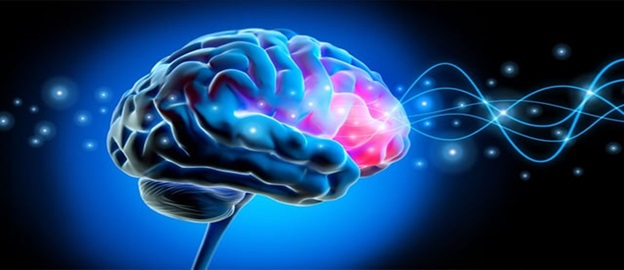Transcranial Magnetic Stimulation may assist with depression along with other mental health issues. By focusing on the activity of your brain’s nerve cells.
Additionally, it could benefit those suffering from neurological conditions. Like multiple sclerosis or Parkinson’s.
What is the purpose of TMS Therapy?
The potential advantages are numerous. Although the process is still being studied. The following conditions may benefit from it:
- Depression
The main condition is major depressive disorder (MDD). For those who have not found relief from medicine and psychotherapy, it is typically advised.
Specialists in TMS Therapy for Oceanside, CA refer to this as a condition that is resistant to therapy. About 30% of depressed individuals don’t improve with standard therapies.
Know that depression may be associated with decreased prefrontal brain activity. The symptoms, such as changes in appetite and poor energy. These are associated with this area of the head.
By activating nerve cells and boosting activity in this region, this therapy may be beneficial.
- Obsessive-Compulsive Disorder
Transcranial Magnetic Stimulation has the potential to alleviate OCD symptoms. In 2018, the FDA authorized TMS for OCD. If an individual with OCD is still not responding to medication and treatment. This solution is advised, much like for depression.
One study found that there is frequently more activity between the striatum and prefrontal cortex in OCD sufferers. Severe OCD symptoms are linked to this hyperconnectedness.
OCD symptoms can be lessened by using this method to block activity in this area of the head.
Despite its potential to treat OCD, TMS is still not commonly recognized in the medical community. Further study may be necessary to determine its best application.
- Anxiety
TMS may reduce anxiety since it tackles psychological conditions like OCD and depression. This is because these illnesses frequently result in symptoms of anxiousness.
Additionally, generalized anxiety disorder, or GAD may benefit from this treatment. People who suffer from anxiety frequently have higher levels of activity in nerve cells in the prefrontal cortex.
A research evaluation from 2021 suggests that this solution could lessen activity in this area. Anyway, visit https://edsource.org/2022/anxiety-stress-remain-top-concerns-for-california-students-survey-finds/666596 for further reading.
- Post-Traumatic Stress Disorder
A review of studies conducted in 2019 found that this treatment was beneficial for treating PTSD. Our prefrontal cortex controls how you process anxiety and fear.
Know that it is the target of this solution. It proved successful in treating PTSD when combined with cognitive processing treatment. This combination had a six-month therapeutic effect.
- Stroke Rehabilitation
When the blood supply to the brain is cut off or obstructed, the cells die, leading to a stroke. Long-term loss of muscular mobility may result from this.
Following a stroke, this Transcranial Magnetic Stimulation may aid in motor rehabilitation. Our motor cortex is the area of the brain that regulates voluntary movement.
This may be affected by magnetic impulses. And this therapy may help stroke patients who have trouble swallowing. That is by activating the motor gray matter.
- Schizophrenia
This is a persistent and frequently severe mental illness. 75% of individuals with schizophrenia experience auditory hallucinations. This is one of the primary symptoms of the illness.
For auditory hallucinations, temporoparietal cortex stimulation may be helpful. In persons with schizophrenia, this language-related area is usually hyperactive.
- Parkinson’s Disease
A neurological condition called Parkinson’s disease results in motor dysfunction, which includes:
- tremors
- Problems with balance
- Freezing of gait, a condition in which you feel immobile while walking
Transcranial Magnetic Stimulation may help with gait freezing. The connections between the areas of the brain implicated in gait freezing were normalized by this treatment. Anyway, click this related site for additional information.
- Alzheimer’s Disease
It is a kind of dementia, that may benefit from Transcranial Magnetic Stimulation. Cognitive decline and increasing memory loss are the results of this illness.
By changing the brain networks that govern memory and learning. This treatment may help treat Alzheimer’s disease. It could alleviate moderate cognitive impairment and Alzheimer’s disease symptoms.
To learn more about how TMS can treat Alzheimer’s disease, additional study is needed.
- Chronic Pain
TMS may help with fibromyalgia and other chronic pain disorders. It could be beneficial by regulating pain-related neurotransmitters and activating the motor cortex.
It’s important to remember that chronic pain and depression frequently coexist. Since depression can exacerbate chronic pain. Transcranial Magnetic stimulation also helps treat the symptoms.
- Nicotine Addiction
It causes cravings and addiction by releasing dopamine. Sometimes known as the happy hormone. Which communicates with the brain’s reward system, particularly the prefrontal cortex.
According to a 2021 research, this treatment may help lessen nicotine cravings by focusing on the prefrontal brain. Additionally, Transcranial Magnetic stimulation encourages dopamine release, which lessens the urge for nicotine.
- Multiple Sclerosis
The neurological system is impacted by the chronic autoimmune disease known as MS. It frequently results in spasticity, or tight muscles that move challenging.
This therapy was applied to the motor cortex of MS patients. And when paired with physical therapy, the treatment reduced spasticity.




